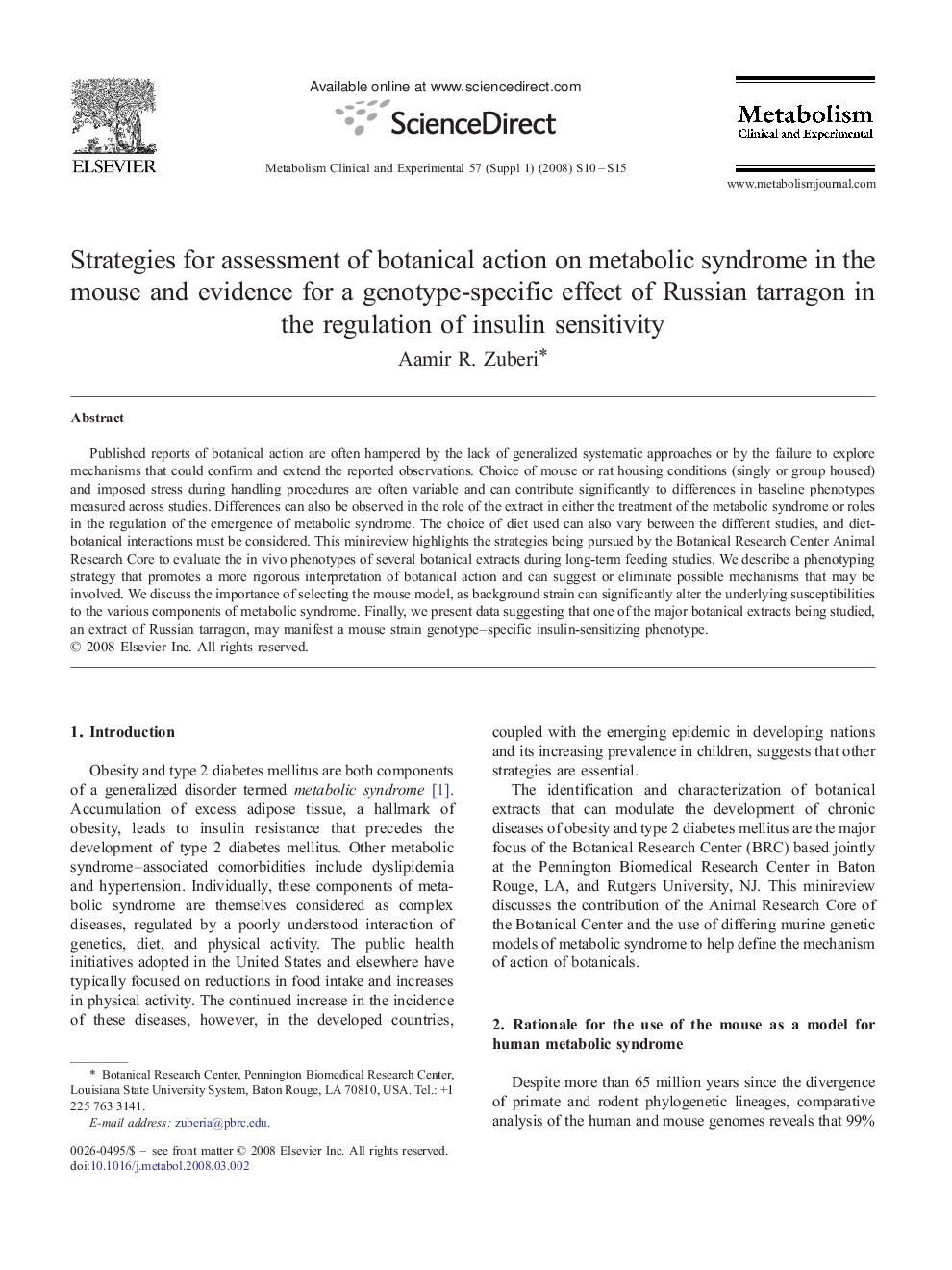| Article ID | Journal | Published Year | Pages | File Type |
|---|---|---|---|---|
| 2806792 | Metabolism | 2008 | 6 Pages |
Abstract
Published reports of botanical action are often hampered by the lack of generalized systematic approaches or by the failure to explore mechanisms that could confirm and extend the reported observations. Choice of mouse or rat housing conditions (singly or group housed) and imposed stress during handling procedures are often variable and can contribute significantly to differences in baseline phenotypes measured across studies. Differences can also be observed in the role of the extract in either the treatment of the metabolic syndrome or roles in the regulation of the emergence of metabolic syndrome. The choice of diet used can also vary between the different studies, and diet-botanical interactions must be considered. This minireview highlights the strategies being pursued by the Botanical Research Center Animal Research Core to evaluate the in vivo phenotypes of several botanical extracts during long-term feeding studies. We describe a phenotyping strategy that promotes a more rigorous interpretation of botanical action and can suggest or eliminate possible mechanisms that may be involved. We discuss the importance of selecting the mouse model, as background strain can significantly alter the underlying susceptibilities to the various components of metabolic syndrome. Finally, we present data suggesting that one of the major botanical extracts being studied, an extract of Russian tarragon, may manifest a mouse strain genotype-specific insulin-sensitizing phenotype.
Related Topics
Life Sciences
Biochemistry, Genetics and Molecular Biology
Endocrinology
Authors
Aamir R. Zuberi,
